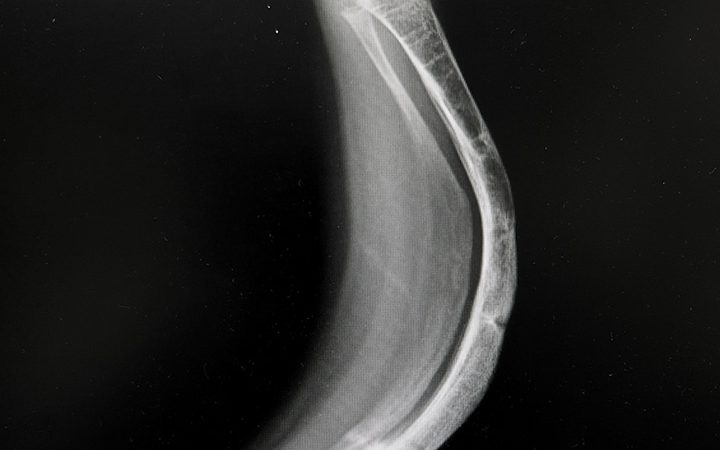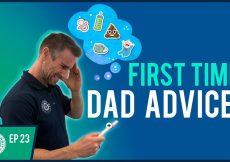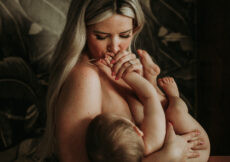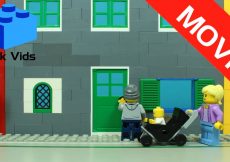Osteogenesis imperfecta (OI), commonly known as brittle bone disease, is a hereditary connective tissue disease characterized by fragile bones that are highly prone to breaking. The symptoms, physical findings, and severity related to this disease can vary from one child to another, depending on the type of the disease. It is known as brittle bone disease since a fragile skeleton is the most prominent sign of the disease.
Research shows that around 25% of children with OI are born into families with no history of the disease. This occurs when the child has a ‘new’ or ‘dominant’ spontaneous mutation (1). Read more about the types, causes, and treatment of brittle bone disease.
Causes Of Brittle Bone Disease
Brittle bone disease occurs due to the mutations in the COL1A1 or COL1A2 genes, which are responsible for carrying the instructions for the production of the collagen protein. Collagen is a major protein present in the bones and the connective tissues, including skin, tendons, and sclera. Collagen is also responsible for providing strength to the bones.
When a mutation occurs in the COL1A1 or the COL1A2, the produced collagen may be faulty or insufficient (2). Thus, if the collagen produced is faulty, the bones will not have sufficient strength and could become prone to breaking easily.
Genetic disorders, such as brittle bone disease, can be hereditary and pass down from one generation to another. It means the baby could have a high risk of developing the condition even if one of the parents has the disease. However, in several cases, the baby may not have a family history of osteogenesis imperfecta
Types Of Brittle Bone Disease
Experts have categorized brittle bone disease into 19 types (3). However, the first four types are the most common ones (4).
- Type I: It is the mildest form of brittle bone disease and is characterized by three features — fractures, presence of blue sclera (the white outer layer of the eyeball), and loss of hearing. It is the most common type, and children usually experience fewer fractures and deformities than the other types (5).
- Type II: It mainly affects infants and is considered to be perinatal lethal. Babies born with this type of defect have short, bowed long bones with crumpling due to in utero fractures. Other signs include blue or gray sclerae and a large soft cranium. The infant might also have low birth weight and underdeveloped lungs.
- Type III: It is considered to be the most severe non-lethal form of brittle bone disease. Type III may lead to severe physical deformities in babies who had broken bones at birth. The newborn may also have slightly shorter than normal hands and legs, a larger than normal head, and a triangular face (5). In addition, babies with type III OI may have a blue discoloration of the whites of the eyes at birth.
- Type IV: The severity of type IV OI may somewhat resemble type I or type III. In most children, the sclera is normal or pale blue during infancy, and it improves as the baby grows older. Children may also face mild to moderate malformation in the bones and have a height usually shorter than average.
Symptoms Of Brittle Bone Disease
The signs and symptoms of brittle bone disease exhibit wide variations in appearance and severity. The main symptom of the condition is fragile bones, which break easily even on the slightest impact or stress (1). The extent of fragility and breakage of the bones varies as per the type of OI and may vary among children with the same type of brittle bone disease.
Frequent fractures and general weakness of the bones could restrict a child’s movement and may cause physical deformities. The severity of physical deformity can vary, with some children experiencing a few problems while the rest requiring support, such as wheelchairs, for mobility later in life.
Other symptoms of brittle bone disease may include:
Diagnosis Of Brittle Bone Disease
The diagnosis of brittle bone disease is based on the detailed evaluation of the baby’s symptoms, physical problems, and family history of brittle bone disease or other genetic ailments.
Broken bones that might occur due to little or no trauma could be the first signs of indication that a child is suffering from brittle bone disease. The doctor may consider the following tests to diagnose brittle bone disease.
- X-ray: X-rays can be used to identify whether or not there are any broken bones in the child’s body. If there is a break in the bone, the X-ray will pass through the broken bone area and appear as a dark line in the white bone (6).
- DNA tests: Healthcare providers can test the DNA of the fetus to check for any mutation in the COL1A1 or the COL1A2 genes or the presence of abnormal collagen. If a parent or a sibling has the OI gene present, then the DNA of the fetus can be checked prenatally to avoid any serious complications (7).
- Blood tests or urine tests: Blood and urine tests could be conducted, depending on the baby’s age (8). Testing the blood or urine may help provide insights into the bone density and the amount of bone reabsorption and formation. It might also prevent the risk of bone fracture if monitored periodically.
- Biochemical testing: Biochemical testing involves sequencing the DNA taken from a sample of small skin biopsy to study the collagens produced. Changes in type 1 collagen might be an indication of brittle bone disease (9).
Treatment For Brittle Bone Disease
Currently, there is no known cure for osteogenesis imperfecta (OI). Nevertheless, management and treatment options are available to prevent complications (9).
- Several treatment options involve supportive therapy, which might help reduce fractures and disabilities. It is also important to handle your baby with utmost care and sensitivity, especially while picking them up or laying them down, to prevent the fragile bones from cracking or breaking.
- In children, the fractures will be treated the same way as they are in adults. It is also important to maintain your child’s overall health to avoid weaknesses or any other additional problems. Intramedullary rodding (placing rods in the bones), a type of orthopedic treatment, is used to help with the positioning of legs and their normal functioning.
Treatment options may evolve as time passes. For instance, newer treatment options with the help of bisphosphonates are being explored to help prevent surgeries and increase bone formation. You may inquire about any new treatment options with your baby’s doctor periodically.
Prognosis Of Brittle Bone Disease
Brittle bone disease is a progressive disease, requiring lifelong management of signs and symptoms to prevent any fractures or deformities, which could cause complications. An interdisciplinary healthcare system might help the child and the family improve the chances of positive outcomes for the child and help provide support (10).
Frequently Asked Questions
1. What is the life expectancy of a child with brittle bone disease?
The life expectancy of children with brittle bone disease may vary depending on the type of the disease (3). For example, children with type I OI often have typical life expectancy, while those with type II may have less than typical life expectancy.
2. Is brittle bone disease painful?
Pain is considered to be a common occurrence in children with OI. They might either have acute or chronic pain depending on the symptoms and the type. The pain caused due to brittle bone disease might not always be optimally treated despite analgesics or coping mechanisms (11).
Osteogenesis imperfecta (OI) or brittle bone disease is an inherited genetic bone disorder that is present from birth. A child born with brittle bone disease may have bones that are not formed normally or may fracture easily. The signs and symptoms of brittle bone disease may vary from mild to severe. Take the help of your child’s doctor to plan a long-term treatment to minimize the risk of limitations and complications as the baby grows older.
References:
MomJunction’s articles are written after analyzing the research works of expert authors and institutions. Our references consist of resources established by authorities in their respective fields. You can learn more about the authenticity of the information we present in our editorial policy.
The following two tabs change content below.




































